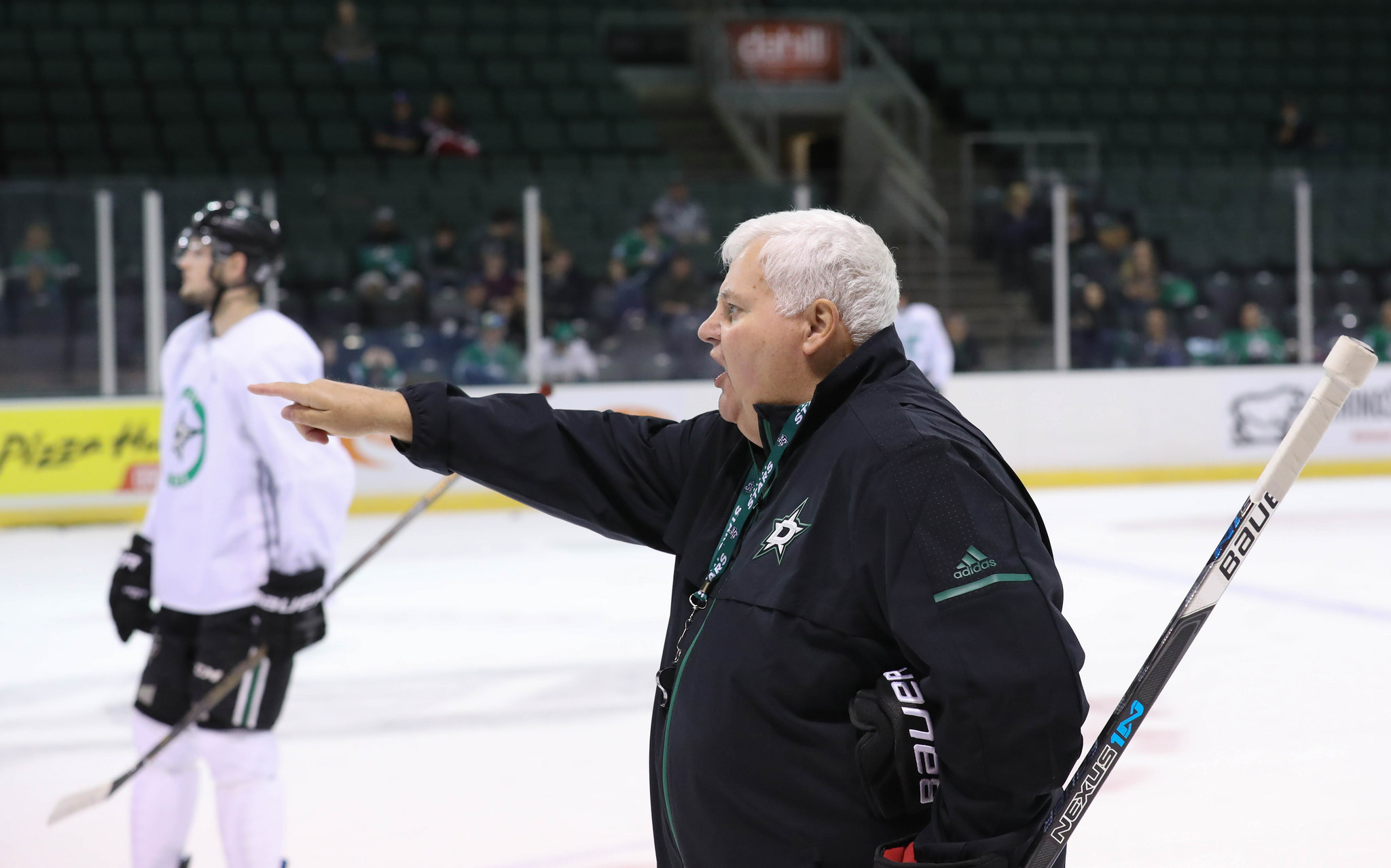FRISCO, Texas — Ken Hitchcock doesn’t go into the locker room after the game anymore.
Hitchcock estimated he’s only entered the locker room “twice, maybe three times” this season after games — for example, after he won his 800th game and when he passed Al Arbour for third in NHL history, Stars captain Jamie Benn presented Hitchcock with the game puck in the locker room.
Hitchcock said it’s all about trying to coach a younger generation and millennials, and he has to deliver the message in a different way than he used to.
“Everything in hockey is the next day,” Hitchcock said. “You move on, and to me I’ve wondered why you shake a players hand after a win and bypass him after a loss, so I decided to just stay away period.”
“I find when you talk after a game, to this younger generation, they can’t really remember what you said,” he added. “All they remember is whether you were happy or mad. So they’re missing the message, so to the message get delivered in teaching the moments the next day.”
Hitchcock said he had those teaching moments at the Stars practice facility in Frisco on Thursday. Before his availability with the media, Hitchcock met with a player and discussed what they needed to do on Friday against the St. Louis Blues.
“I talked to him about what I saw in his game and what needs to be improved and I told him why this has such a big impact on our team in a positive way,” Hitchcock said. “Well he left the meeting, which was a stern message, but he left the meeting positive. So he has a very clear picture of how he has to play tomorrow to help us win.”
The key, according to Hitchcock, is paying more attention to the “why?” question. The “what” and “how” aren’t nearly as important as explaining why to a player.
“Why has to be extended a lot further. If you tell them what and how, that has little impact,” Hitchcock said. “And if you want them to engage you have to tell them why they played well and what they did. And then to tell them why they didn’t play well and what they did, so that why time has to be extended.”
Hitchcock used that unnamed player as an example.
“Telling em what to do, that’s easy and telling em how to do, that’s easy,” Hitchcock said. “But why? Why does this impact our team? That’s what players want to know, how am I interacting with people? And players want that answer.”
It’s an interesting juggling act for Hitchcock. While he says players need to be walked through things more, explaining why rather than just issuing an order like he would when he coached Dallas in the late 1990s, he also has to rely on his players more.
With less time to explain “why” during a game, in-between-period adjustments from a coach don’t have much of an impact as you’d think. Sure he can come in with a message, but he has no way of guaranteeing the message is received.
“I don’t think you can have an immediate impact, you can give a little bit of information, but the major impact is when you’re not in there,” Hitchcock said. “So a coach goes in there, he’s in there between 60 and 90 seconds, that’s not much time. So you’ve got to rely on your leaders and veterans.”
What about a blow-up in the locker room? The good-old-fashioned angry yelling and flipping trash can message to the team?
“There is a place for it, but big deal, a guy got mad,” Hitchcock said. “But it’s got to be why based. If you want an impact.”

Leave a Reply
You must be logged in to post a comment.